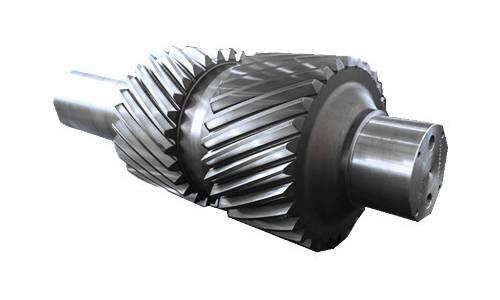Single Helical vs. Double Helical Gears: What’s the Difference?

Strong 8k brings an ultra-HD IPTV experience to your living room and your pocket.
Gears are integral components in mechanical systems, transferring torque and motion between rotating shafts. Among the various gear types, helical gears are particularly valued for their ability to handle high loads and operate smoothly and quietly. But within the category of helical gears, there are two primary types to consider: single helical gears and double helical gears. Understanding the differences between these two can help in selecting the right gear for your application.
In this article, we’ll dive deep into how these gears work, their structural differences, advantages and disadvantages, and typical use cases.
What Are Helical Gears?
Helical gears are a type of cylindrical gear where the teeth are cut at an angle to the gear axis. This design allows for gradual engagement of the teeth, resulting in smoother and quieter operation compared to spur gears, which have straight teeth.
Because the teeth engage more gradually, helical gears can carry more load and are often used in high-speed or high-torque applications such as automotive transmissions, turbines, and heavy machinery.
Now, let’s break down the two variants: single helical gears and double helical gears.
What Are Single Helical Gears?
Single helical gears feature teeth that are cut at a single, consistent angle relative to the gear axis. This angle—called the helix angle—allows for progressive engagement of the gear teeth, improving contact and reducing noise.
Key Features:
- Teeth are angled in one direction (either left-hand or right-hand).
- Produce axial thrust, or side-to-side force, due to the angled tooth design.
- Easier to manufacture and install than double helical gears.
- Commonly used in automotive systems, industrial machinery, and conveyor drives.
Advantages:
- Smoother and quieter than spur gears.
- Capable of transmitting more power for the same size gear.
- Simple design compared to double helical gears.
Disadvantages:
- Axial thrust requires additional bearings or thrust washers to handle the side load.
- Higher wear on components due to the thrust forces.
What Are Double Helical Gears?
Double helical gears, also known as herringbone gears, are essentially two mirrored helical gears mounted side by side, with the teeth cut in opposite directions (left-hand and right-hand). This configuration cancels out the axial thrust that occurs in single helical gears.
Key Features:
- Two sets of teeth, angled in opposite directions.
- No net axial thrust—forces are balanced between the two sets.
- Often used in heavy-duty or high-power applications like turbines, compressors, and marine propulsion systems.
Advantages:
- Eliminates the need for thrust bearings due to the self-canceling axial thrust.
- Can carry higher loads and operate more efficiently under stress.
- More stable under high-speed operation.
Disadvantages:
- More complex and expensive to manufacture.
- Heavier and bulkier than single helical gears.
- Difficult to align perfectly during installation.
Application-Specific Considerations
When choosing between single and double helical gears, consider the following:
1. Load and Torque Requirements
If your application involves high loads or torques (like a ship propulsion system), double helical gears offer superior performance due to their balanced design and higher load capacity.
2. Space Constraints
Single helical gears are more compact and easier to integrate into systems with tight spatial constraints. Double helical gears, while more efficient, are bulkier.
3. Cost and Manufacturing Complexity
Double helical gears require precise alignment and advanced manufacturing processes, making them more expensive. For cost-sensitive applications, single helical gears may be preferable.
4. Maintenance Needs
Due to the absence of axial thrust in double helical gears, there’s less strain on the bearing system, potentially leading to lower maintenance over time.
Modern Innovations and Trends
With advancements in CNC machining, 3D modeling, and material science, both single and double helical gears are seeing improvements in strength, efficiency, and durability.
- Additive manufacturing is being explored to produce lightweight gear prototypes with complex geometries.
- Advanced coatings and lubricants are being used to reduce wear and extend operational life.
- Digital twin technology allows for better simulation of gear systems before physical production, optimizing performance and reducing errors.
Conclusion
The choice between single helical and double helical gears boils down to application needs. Single helical gears offer a balance of performance and simplicity, making them suitable for a wide range of standard industrial and automotive uses. Double helical gears, on the other hand, shine in heavy-duty, high-load environments where performance and longevity are critical.
By understanding the mechanical and operational differences between the two, engineers and designers can make informed choices that optimize system efficiency, reduce maintenance needs, and ensure reliable performance.
Whether you're designing a conveyor, powering a marine vessel, or building a gearbox, choosing the right gear type is crucial. And now that you know the ins and outs of single vs. double helical gears, you're in a better position to gear up for success.
Note: IndiBlogHub features both user-submitted and editorial content. We do not verify third-party contributions. Read our Disclaimer and Privacy Policyfor details.


